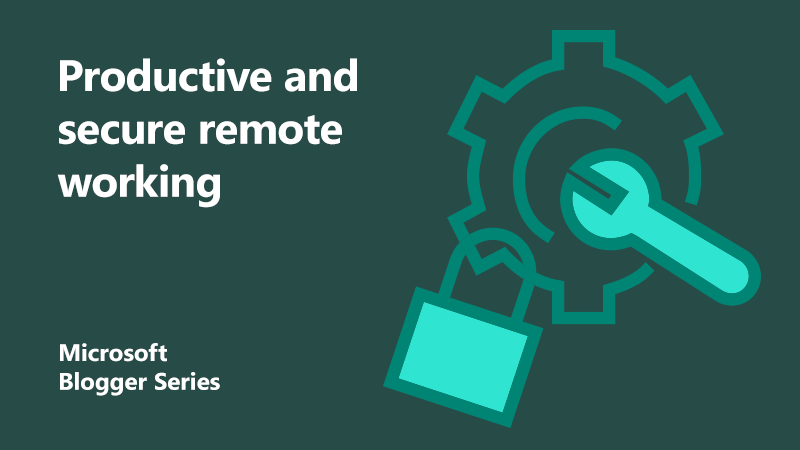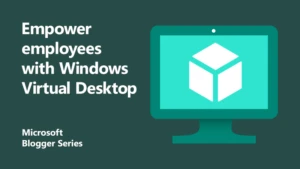
How Fife Council enabled productive and secure remote working with Windows Virtual Desktop
 Fife Council is the local authority for the Fife area of Scotland. Employing over 18,000 people, it’s the third largest council in Scotland. It fulfils a variety of local services across the region, including providing social care, education services via 18 secondary schools and 130 primary schools, council housing, environmental services- including refuse collection, and a number of local community facilities. The 2018 ‘Beast from East’ weather incident saw business continuity around remote working come to the forefront within the Council.
Fife Council is the local authority for the Fife area of Scotland. Employing over 18,000 people, it’s the third largest council in Scotland. It fulfils a variety of local services across the region, including providing social care, education services via 18 secondary schools and 130 primary schools, council housing, environmental services- including refuse collection, and a number of local community facilities. The 2018 ‘Beast from East’ weather incident saw business continuity around remote working come to the forefront within the Council.
Identifying a reliable remote working solution
The static on-premises solution was coping, just about. Recognising that they needed a more on-demand solution, they started looking at other options. Fife Council partnered with Microsoft to ensure that solutions were in place to allow employees to work productively and securely when remote in the event that they were unable to work on council office premises in the future.
Windows Virtual Desktop (WVD) was quickly identified as a solution to enable remote working and critical business continuity for Fife Council. WVD could be configured to deliver critical line of business applications and desktops to employees working remotely. Furthermore, Fife Council had already procured Microsoft 365 E3 to enable employees to access Windows in the physical office environment. This meant they didn’t need further license expenditure to enable access to WVD.

Partnering with Microsoft Engineering
In late 2019, Fife Council partnered closely with Microsoft Engineering to pilot WVD for remote workers. This allowed for feedback to be incorporated into service improvements on the Azure side and also within Windows 10 Multi-Session.
Rapid business continuity at scale
When COVID-19 hit communities in March 2020, Fife Council had already deployed the necessary infrastructure to allow remote working. They quickly scaled their WVD deployment from 400 users to over 6000+ users to meet working from home demands. Seamlessly, employees could use their personal devices to access their corporate environment. This meant that Fife Council didn’t have to spend lots of their budget to procure new devices. As WVD runs on Azure and cloud-based infrastructure, Fife Council could scale up the remote working solution overnight. This meant they only have to pay for the infrastructure they use. Use of Windows 10 multi-session has also allowed Fife Council to provide employees with a full and rich Windows 10 client, whilst achieving the cost savings enabled hosting multiple users on multi-session session hosts.
“Fife Council were extremely fortunate to implement Microsoft’s Windows Virtual desktop when we did towards the end of 2019. The technology undeniably helped us soften what was a very severe blow when COVID-19 struck. Without this technology we would have been in a very dark place indeed with thousands of users having no access at all”
– Andy Milne, IT Service Manager at Fife Council
 For Fife’s residents, this business continuity enabled by WVD at the local council has meant that vital services have been able to continue. This has a significant positive impact on the local community.
For Fife’s residents, this business continuity enabled by WVD at the local council has meant that vital services have been able to continue. This has a significant positive impact on the local community.
Learnings from Fife Council’s journey to remote working
Based on their experiences, the Fife Council team make the following recommendations to organisations looking to start a WVD Journey.
- Understand your business justification, first: For us, this was our need to ensure that we had suitable business continuity in place to allow our employees to be productive wherever they are. This quickly changed from a nice to have to business critical overnight.
- Start with the basics: We initially tried to mirror the ‘in office’ desktop experience via WVD. We quickly realised this was not the best approach and went back to basics. We then built on the basics which ended up being a far more balanced and effective approach.
- Know your numbers: Take the time to understand the capacity that you need. This then helps you to understand the budget that you require.
- Start with the WVD service released in public preview in May 2020. We started our journey a while ago. However, If we were to start again now we would absolutely start with the WVD service released in public preview in May 2020 and utilise those new features and capabilities. We are migrating to this now and are excited about what this can mean for the service we can deliver.
- Understand the clients you need to support. Take the time to understand the end user requirements. Application requirements are paramount, especially as your legacy and specialised applications can be particularly tricky. Collaboration requirements, printing, and file sharing were all areas we had to make some pretty fast decisions on.
- User choice. We offer a tier system to users based on their technology needs. For some users (Tier 1), email and calendar on their phone using Intune MAM/APP policies is sufficient. Other users (Tier 2) require Office 365 web apps (Word, Excel, PowerPoint, etc). Our Tier 3 users are those requiring the full ‘in office’ experience using WVD. There is a spectrum of solutions that Microsoft has available to ensure companies are able to effectively manage business continuity and mapping users to the right technology is key.
“Windows Virtual Desktop was absolutely essential for us in terms of our response to COVID-19. Like many, we were faced with a continuity issue unparalleled in recent times. For us, this meant not only the continuation of services we already delivered, but also responding very quickly to new demands. To do that, we needed to provide as close to the ‘in-office’ experience as we could to a workforce now working away from our offices. This meant multiplying previous remote working capacities by a factor of 15 almost overnight – something which would have been impossible without a scalable and cloud-based approach which also worked well on a range of Council and self-provided devices. There is little doubt that the Virtual Desktop solution will not only be vital to the future resilience of our public services to the people of Fife, but it will also form a key part of our future device strategy as we seek to develop new, agile and cost-effective approaches going forward.”
– Charlie Anderson, Head of ICT at Fife Council
Find out more
Learn more: Discover the benefits of Windows Virtual Desktop
Read more: Empower employees for secure remote work with Windows Virtual Desktop
Watch the on-demand webinar: The benefits for WVD and how to start your journey
Tools to empower your development team
Read the documentation: How to get started with Windows Virtual Desktop
Explore the learning path: Deliver remote desktops and apps from Azure with Windows Virtual Desktop
About the author

Kirsty is Microsoft UK’s Windows Virtual Desktop Lead. Kirsty started her career at the University of Oxford (Christ Church) where she studied Economics and Management. She has since joined Microsoft and worked with customers in a wide range of industries as a Commercial Executive and more recently in the Azure Business Group.

Blair Lochrie is Microsoft Scotland’s Public Sector CTO, responsible for driving technology strategy across the Microsoft’s Public Cloud. Previously, Blair worked for Microsoft Services across Scotland’s Financial Industry, helping drive adoption of Office 365, Azure and Dynamics. Prior to Microsoft, Blair held a number of roles within BT following graduating from their Modern Apprenticeship Programme – as a result, he is a fierce advocate of early in career programmes and continuous education.

David Rankin represents the Windows Virtual Desktop (WVD) engineering Customer Acceleration Team (CAT) in EMEA. Partnering with strategic enterprise customers to enable successful deployments of Windows Virtual Desktop and leverage their feedback and insights to improve the existing product and develop new product capabilities. David held a number of roles previously within Microsoft Customer Service and Support, developing a passion for the high quality of products, services and end user experiences.



